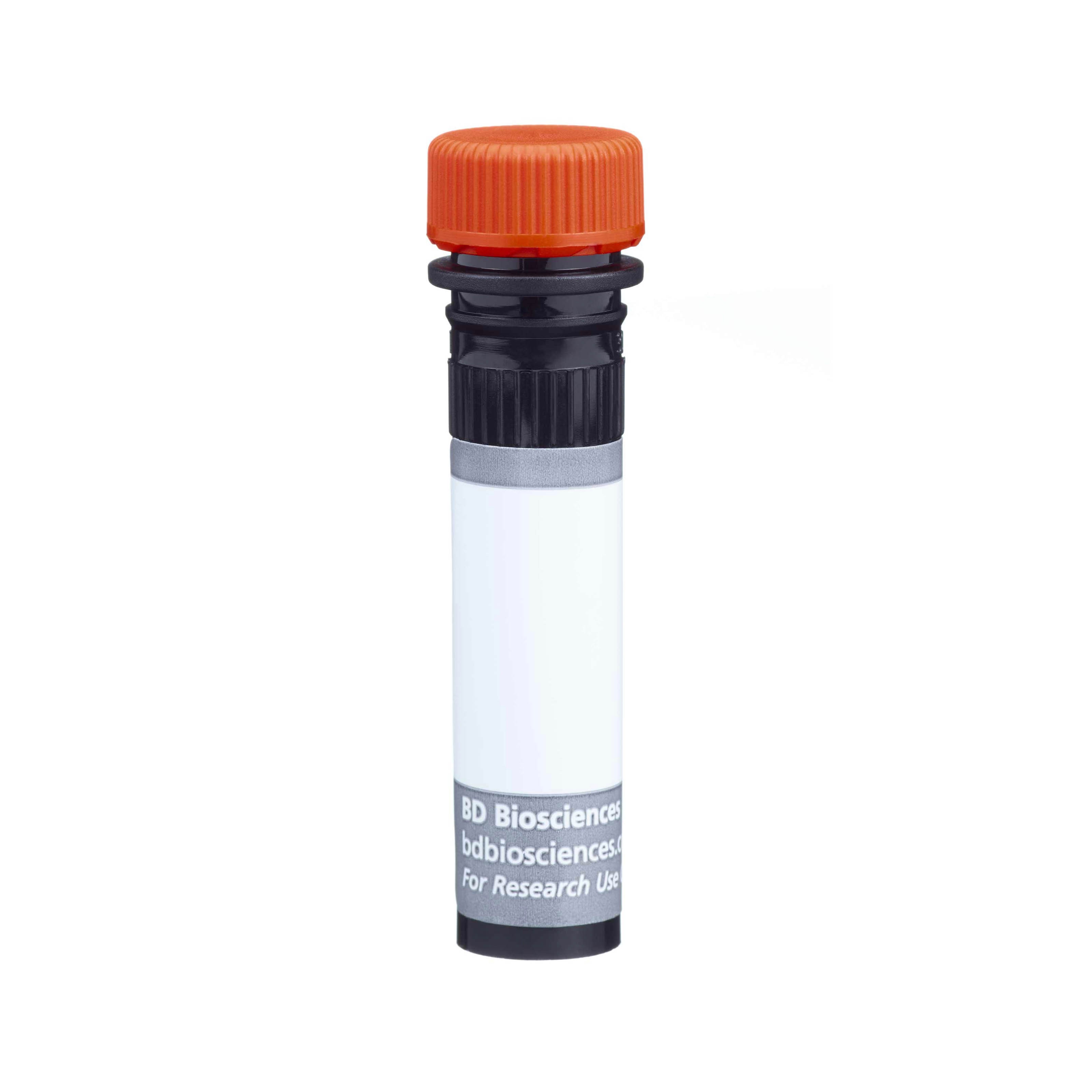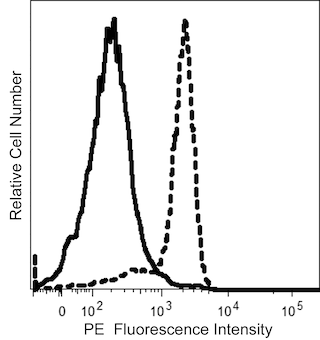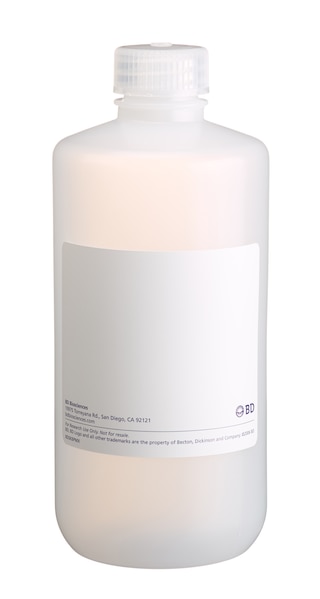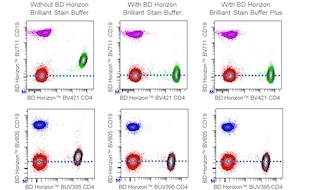Old Browser
This page has been recently translated and is available in French now.
Looks like you're visiting us from {countryName}.
Would you like to stay on the current country site or be switched to your country?
BD OptiBuild™ BUV737 Mouse Anti-Human HLA-DP
Clone B7/21 (also known as B7/21.49; B7/21 (IgG1))
(RUO)

Regulatory Status Legend
Any use of products other than the permitted use without the express written authorization of Becton, Dickinson and Company is strictly prohibited.
Preparation And Storage
Recommended Assay Procedures
BD™ CompBeads can be used as surrogates to assess fluorescence spillover (Compensation). When fluorochrome conjugated antibodies are bound to BD CompBeads, they have spectral properties very similar to cells. However, for some fluorochromes there can be small differences in spectral emissions compared to cells, resulting in spillover values that differ when compared to biological controls. It is strongly recommended that when using a reagent for the first time, users compare the spillover on cells and BD CompBead to ensure that BD CompBeads are appropriate for your specific cellular application.
For optimal and reproducible results, BD Horizon Brilliant Stain Buffer should be used anytime two or more BD Horizon Brilliant dyes are used in the same experiment. Fluorescent dye interactions may cause staining artifacts which may affect data interpretation. The BD Horizon Brilliant Stain Buffer was designed to minimize these interactions. More information can be found in the Technical Data Sheet of the BD Horizon Brilliant Stain Buffer (Cat. No. 563794/566349) or the BD Horizon Brilliant Stain Buffer Plus (Cat. No. 566385).
Note: When using high concentrations of antibody, background binding of this dye to erythroid cell subsets (mature erythrocytes and precursors) has been observed. For researchers studying these cell populations, or in cases where light scatter gating does not adequately exclude these cells from the analysis, this background may be an important factor to consider when selecting reagents for panel(s).
Product Notices
- The production process underwent stringent testing and validation to assure that it generates a high-quality conjugate with consistent performance and specific binding activity. However, verification testing has not been performed on all conjugate lots.
- Researchers should determine the optimal concentration of this reagent for their individual applications.
- An isotype control should be used at the same concentration as the antibody of interest.
- Caution: Sodium azide yields highly toxic hydrazoic acid under acidic conditions. Dilute azide compounds in running water before discarding to avoid accumulation of potentially explosive deposits in plumbing.
- For fluorochrome spectra and suitable instrument settings, please refer to our Multicolor Flow Cytometry web page at www.bdbiosciences.com/colors.
- Please refer to www.bdbiosciences.com/us/s/resources for technical protocols.
- BD Horizon Brilliant Stain Buffer is covered by one or more of the following US patents: 8,110,673; 8,158,444; 8,575,303; 8,354,239.
- Please refer to http://regdocs.bd.com to access safety data sheets (SDS).
- BD Horizon Brilliant Ultraviolet 737 is covered by one or more of the following US patents: 8,110,673; 8,158,444; 8,227,187; 8,575,303; 8,354,239.
Companion Products






The B7/21 monoclonal antibody specifically recognizes HLA-DP antigens which are human Major Histocompatibility Complex (MHC) Class II antigens. HLA-DP antigens are heterodimers comprised of two different type I transmembrane glycoproteins that are noncovalently-associated. The ~34 kDa HLA-DP alpha (HLA-DPα) and ~26-28 kDa HLA-DP beta (HLA-DPβ) chains are encoded by HLA-DPA1 and HLA-DPB1 genes, respectively, that are located within the Human Leukocyte Antigen (HLA) Complex of chromosome 6. The B7/21 antibody recognizes a monomorphic determinant present on cells expressing HLA-DP1, -DP2, -DP3, -DP4, and -DP5 and does not reportedly bind to HLA-DR or HLA-DQ Class II antigens. HLA-DP is variably expressed on B cells, monocytes, macrophages, dendritic cells (DC), activated T cells, and tumor cell lines including B cell lines, myelomas, and some myeloid leukemias. HLA-DP functions in the presentation of peptides derived from extracellular antigens to CD4+ T cells.
The original B7/21 hybridoma was derived from hybridization of mouse 5194/SXXOBU1 myeloma cells with spleen cells from BALB/c mice immunized with NALM6 human leukemia cells and secreted IgG3, κ antibody. An immunoglobulin switch-variant B7/21 hybridoma, also known as B7/21.49 or B7/21 (IgG1), was subsequently isolated that secreted lgG1 antibody with the same specificity as the original IgG3 antibody. The purified switch-variant B7/21 IgG1 antibody blocks the staining of HLA-DP-positive cells by fluorescent B7/21 IgG3 antibody. The B7/21 IgG1 antibody is reportedly not cytotoxic in the presence of complement.
The antibody was conjugated to BD Horizon BUV737 which is part of the BD Horizon Brilliant™ Ultraviolet family of dyes. This dye is a tandem fluorochrome with an Ex Max near 350 nm and an Em Max near 737 nm. BD Horizon Brilliant BUV737 can be excited by the ultraviolet laser (355 nm) and detected with a 740/35 nm filter. Due to the excitation of the acceptor dye by the red laser line, there may be significant spillover into red laser detectors with filters in the 700-720 nm range.

Development References (2)
-
Lennon-Duménil AM, Barbouche MR, Vedrenne J, et al. Uncoordinated HLA-D gene expression in a RFXANK-defective patient with MHC class II deficiency.. J Immunol. 2001; 166(9):5681-7. (Clone-specific). View Reference
-
Strobl H, Bello-Fernandez C, Riedl E, et al. flt3 ligand in cooperation with transforming growth factor-beta1 potentiates in vitro development of Langerhans-type dendritic cells and allows single-cell dendritic cell cluster formation under serum-free conditions.. Blood. 1997; 90(4):1425-34. (Clone-specific). View Reference
Please refer to Support Documents for Quality Certificates
Global - Refer to manufacturer's instructions for use and related User Manuals and Technical data sheets before using this products as described
Comparisons, where applicable, are made against older BD Technology, manual methods or are general performance claims. Comparisons are not made against non-BD technologies, unless otherwise noted.
For Research Use Only. Not for use in diagnostic or therapeutic procedures.
Report a Site Issue
This form is intended to help us improve our website experience. For other support, please visit our Contact Us page.